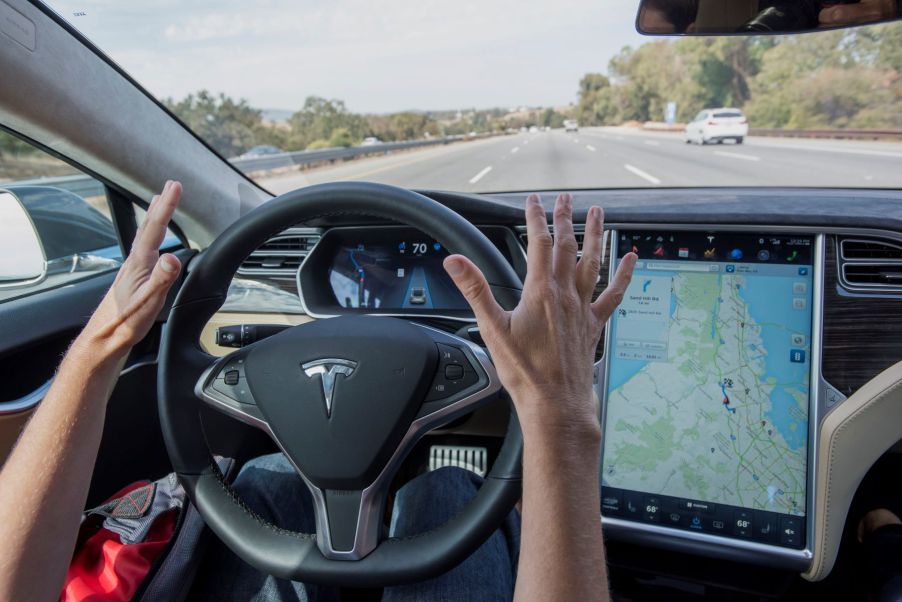
Elon Musk Promises to Fulfill a Promise Made in 2015 by the End of 2022
Tesla has become a household name by pushing the boundaries of electric vehicle innovation. Led by its outspoken and often controversial CEO Elon Musk, Tesla cars have demonstrated the speed and range possible for EVs. Despite the company’s success, it has struggled to meet one of its goals: self-driving cars. Elon Musk’s promises of autonomous Teslas have never proven true, but he has once again promised that this will be possible by the end of 2022. Should he be trusted?
Technological innovations from Tesla
Tesla has been at the forefront of the electric vehicle revolution with cars like the Model S Plaid. According to MotorTrend, the Tesla Model S Plaid has a range of up to 348 miles and can accelerate from 0 to 60 mph in under 2 seconds. Numbers like this are astounding and highlight how EVs can be practical for longer road trips and just as fast as gas-powered cars.
One innovation Tesla has been working toward has been autonomous vehicles. All Tesla vehicles are currently equipped with Autopilot, which is essentially an advanced form of cruise control. Tom’s Guide states that Tesla Autopilot enables the car to brake for pedestrians and keep itself centered in a lane. However, it is not fully autonomous by any stretch of the definition, as a driver must be fully aware behind the wheel at all times.
Elon Musk has made regular promises about self-driving cars

Despite all of the company’s innovations, Tesla CEO Elon Musk has had one technological achievement that he wanted the company to reach: a truly autonomous vehicle. According to Business Insider, Musk has been promising that autonomous Teslas are coming soon since 2015, and he has recently made a similar claim. Is this technology close to coming out, though?
Tesla currently offers an upgrade for the Autopilot system called Full Self-Driving, but this name is a bit misleading. Full Self-Driving does add features to the Autopilot system, such as enabling the Tesla to change lanes and park itself, but it does not make the vehicle truly autonomous. According to The Street, a driver must still be present and attentive when using Full Self-Driving, so the company has a long way to go before they fulfill Elon Musk’s promises.
Musk and Tesla are facing more criticism and EV competition
Tesla’s Full Self-Driving has faced other issues besides failing to be completely autonomous, primarily due to safety concerns. Instances of drivers getting into crashes while using Full Self-Driving mode have put the safety of the feature into question, and one test, in particular, has recently gone viral. In the test, Business Insider states that a Tesla vehicle using Full Self-Driving struck a child-sized mannequin without slowing down or attempting to avoid the collision. This test was conducted by a prominent Tesla critic, but its results are still relevant. It shows that Tesla still has a long way to go before having safe and practical autonomous driving.
Beyond failing to meet Elon Musk’s promises, Tesla is also facing more competition as the electric vehicle market grows. Tesla is still the most popular name in electric vehicles, and bad publicity from its lackluster Full Self-Driving service is not halting the company’s momentum. However, other EV options may challenge Tesla’s dominance in the future. Take the infamous Tesla Cybertruck as an example. Musk has repeatedly changed the estimated release date for the futuristic electric pickup, but in the meantime, other electric trucks like the Ford F-150 Lightning have hit the market. As the market becomes more competitive, Tesla may have to rely on more than ambitious promises to maintain its top spot.


